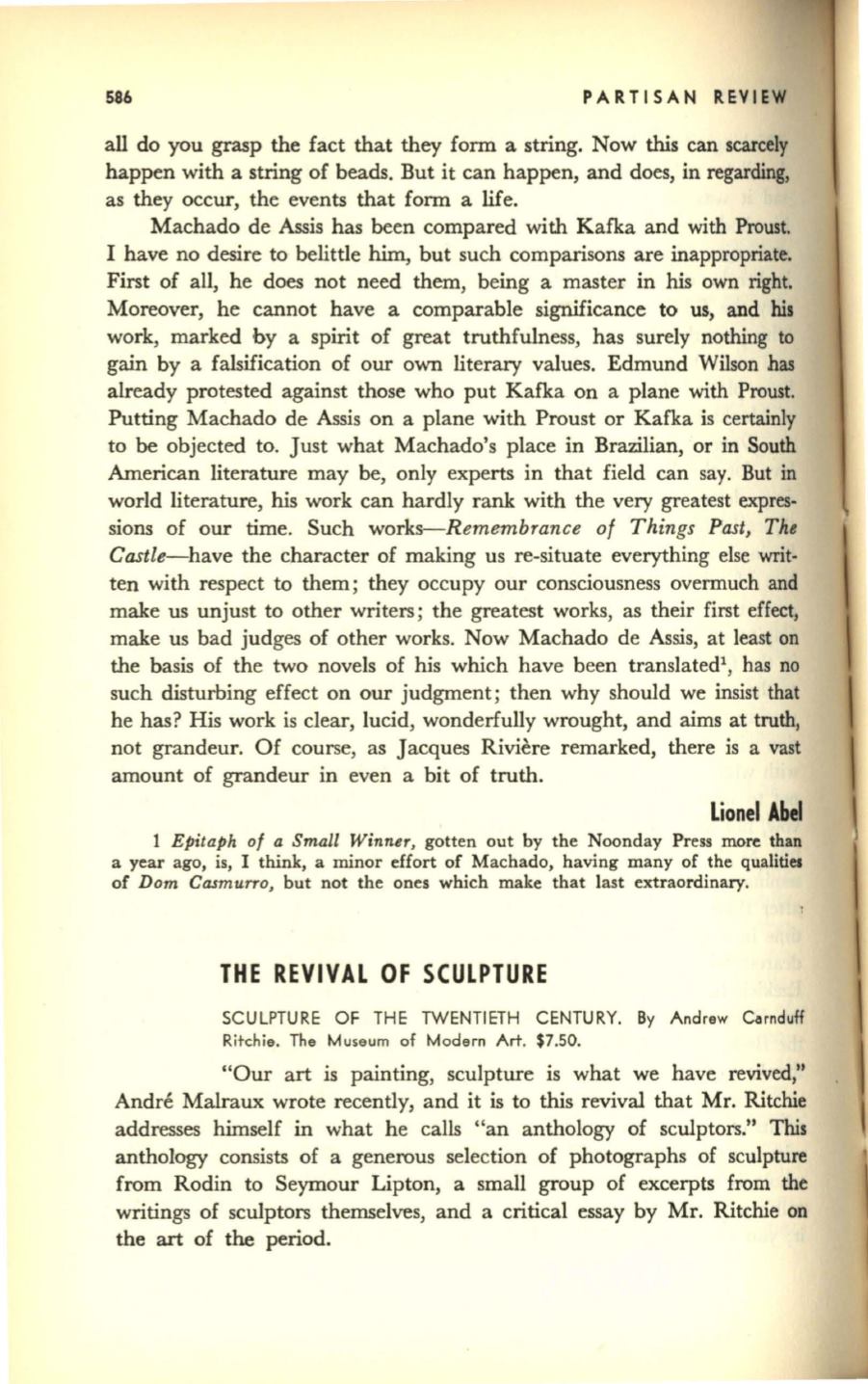
586
PARTISAN REVIEW
all do you grasp the fact that they form a string. Now this can scarcely
happen with a string of beads. But it can happen, and does, in regarding,
as they occur, the events that form a life.
Machado de Assis has been compared with Kafka and with
Proust
I have no desire to belittle
him,
but such comparisons are inappropriate.
First of all, he does not need them, being a master in his own right.
Moreover, he cannot have a comparable significance to us, and
his
work, marked by a spirit of great truthfulness, has surely nothing
to
gain by a falsification of our own literary values. Edmund Wilson
has
already protested against those who put Kafka on a plane with
Proust.
Putting Machado de Assis on a plane with Proust or Kafka is certainly
to
be
objected to. Just what Machado's place in Brazilian, or in South
American literature may
be,
only experts in that field can say. But
in
world literature, his work can hardly rank with the very greatest expres–
sions of our time. Such
works- R emembrance of Things Past, The
Castle-have
the character of making us re-situate everything else writ–
ten with respect to them; they occupy our consciousness overmuch and
make us unjust to other writers ; the greatest works, as their first effect,
make us bad judges of other works. Now Machado de Assis, at least on
the basis of the two novels of his which have been translated1, has no
such disturbing effect on our judgment; then why should we insist that
he has? His work is clear, lucid, wonderfully wrought, and aims at truth,
not grandeur. Of course, as Jacques Riviere remarked, there is a vast
amount of grandeur in even a bit of truth.
Lionel Abel
1 Epitaph of a Small Winner,
gotten out by the Noonday Press more than
a year ago, is, I think, a minor effort of Machado, having many of the qualities
of
Dom Casmurro,
but not the ones which make that last extraordinary.
THE REVIVAL OF SCULPTURE
SCULPTURE OF THE TWENTIETH CENTURY.
By
Andrew Carnduff
Ritchie. The Museum of Modern Art. $7.50.
"Our art is painting, sculpture is what we have revived,"
Andre Malraux wrote recently, and it is to this revival that Mr. Ritchie
addresses himself
in
what he calls "an anthology of sculptors." This
anthology consists of a generous selection of photographs of sculpture
from Rodin to Seymour Lipton, a small group of excerpts from the
writings of sculptors themselves, and a critical essay by Mr. Ritchie on
the
art
of the period.


